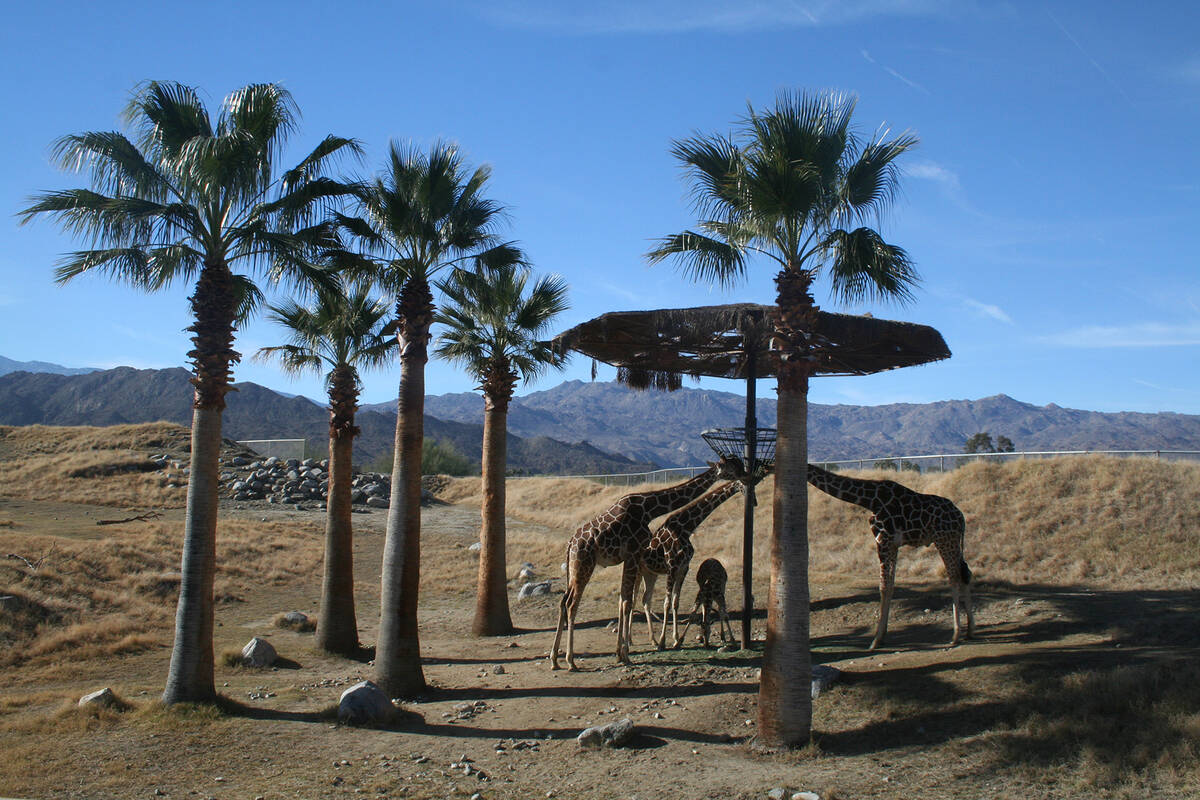
For outdoor lovers who are looking for a family or multigenerational weekend, Palm Springs, California, will certainly fit the bill. While there are hundreds of wonderful things to do here, three places should top any list for those traveling with people of different ages.
These best destinations are the Living Desert Zoo and Gardens, the Palm Canyons of the Agua Caliente Band of Cahuilla Indians, and the Palm Springs Aerial Tramway. Heading to these places could afford you a ride on the largest rotating tram in the world, a hike in the San Jacinto National Forest, feeding a giraffe, and communing in nature along a perennial creek in a palm-filled canyon.
The Living Desert Zoo and Gardens by itself would be worth the trip. Located in the neighboring town of Palm Desert, it encompasses about 2,000 acres and celebrates not only America’s own deserts but also the world’s other arid climes, such as the African Savanna and Australia. Some 500 animals, representing 150 species from those regions, now make their homes here.
One of the most popular exhibits is the African Safari, where you will see cheetahs, zebra and giraffes. You can even have a chance to feed one of the giraffes. The giraffe Savannah habitat is home to a herd of 10 giraffes now, thanks to the recent birth in February (2022) of a baby girl weighing in at 143 pounds and standing 5 foot 10 inches.
The botanical gardens at the Living Desert boast 50 immersive gardens representing deserts in North America and Mexico. There are also nature trails, animal presentations and interactive attractions for children of all ages. To reserve tickets, call 760-346-5694 or visit www.livingdesert.org
The best places to hike in or near Palm Springs are at the Indian Canyons, managed by the Agua Caliente Band of Cahuilla Indians, descendants of the original settlers of Palm Springs. The canyons are only a few minutes’ drive from anywhere in the city; 6,700 acres (of the reservation’s 32,000 total) actually lie within the city limits. The four main canyons are Palm, Andreas, Murray and Tahquitz, all a bit different yet all home to the California fan palm (Washingtonia filifera).
If you only have time or inclination to hike one canyon I suggest it be Andreas as it’s a loop trail only about 1 mile long and follows the palm-lined banks of the perennially flowing Andreas Creek. There are plenty of places to access the stream, rest and take in the sights and sounds. On the boulders along the way you can still see metates, depressions in the rock shaped centuries ago to grind food.
In the days when the Cahuillas lived here undisturbed the canyons met all their needs. There was plenty of water, wild game and more than 200 different plants that were useful for food, building shelter and for clothing. Even today, depending on the time of year, location and time of day, you might be treated to the sights of wild ponies, mule deer and peninsula bighorn sheep.
One highlight of a trip to Palm Springs would be taking the Palm Springs Aerial Tramway, the world’s largest rotating tram. This takes visitors on a spine-tingling ride up Chino Canyon to Mount San Jacinto State Park. This is definitely not a ride for anyone scared of heights as it steeply ascends from 2,643 feet at Valley Station to 8,516 feet at Mountain Station in a mere 2 ½ miles and 10 minutes.
Once you disembark the tram you will find restaurants and observation decks with far-reaching views of the Coachella Valley below. Directly behind the station lie the trailheads for 50 miles of forested hiking. At this elevation it will be about 30-40 degrees cooler than in Palm Springs and even in spring there could be snow, so dress accordingly. For more information, call 888-515-8726 or visit www.pstramway.com.
For lodging, restaurants and other information on the Palm Springs Area visit www.visitgreaterpalmsprings.com.
Many of Deborah Wall’s columns have been compiled into books about hiking in the Southwest. She is also the author of “Great Hikes, a Cerca Country Guide” and a co-author of the book “Access For All, Seeing the Southwest With Limited Mobility.” Wall can be reached at Deborabus@aol.com.